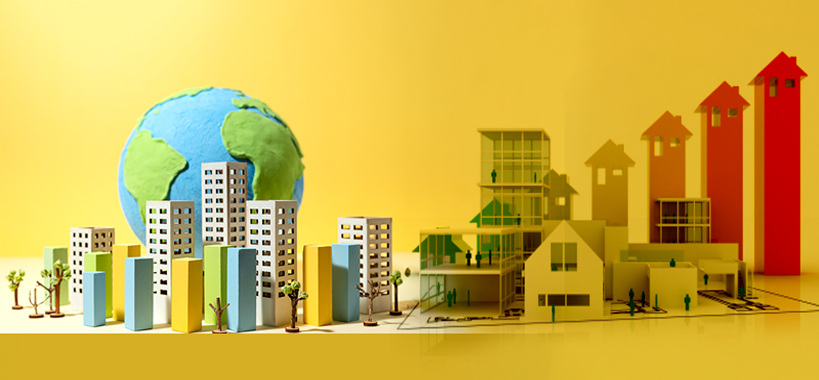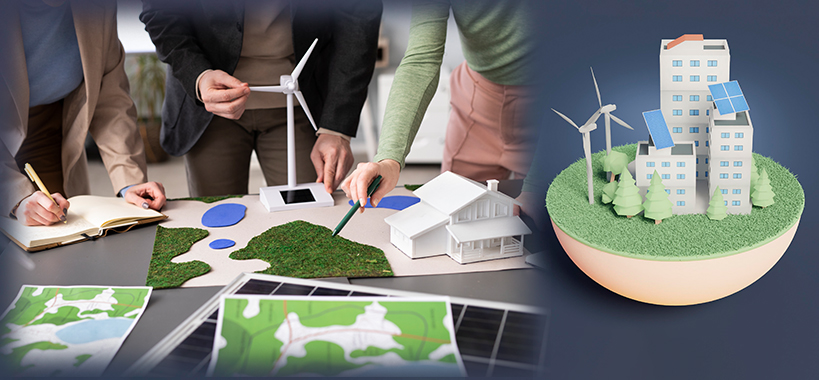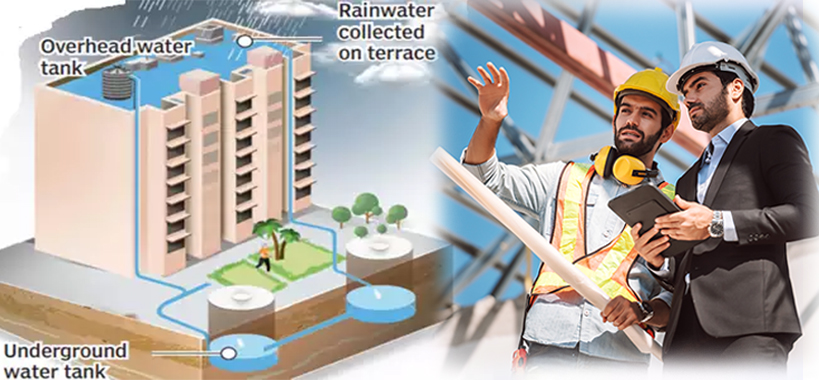Welcome to Skytree!

Energy Efficient Building Design – The Futuristic Architecture
The rising concern about global warming, pollution, and energy conservation, pushes the construction industry towards energy-efficient building design. The usage reduction of natural resources, land, raw materials, and energy can help us combat these rising concerns.Homes and other buildings account for nearly 40% of total energy use in the US. Therefore, increasing their energy efficiency can reduce greenhouse gas emissions, reliable non-renewable resources, etc. Energy-efficient building design upgrades or constructs building to get the most work out of the supplied energy, energy loss reduction, and makes optimum use of renewable energy such as solar, wind, and rain.

Building Designs for Improving Energy Efficiency
A building design plays a significant role in improving its energy efficiency. The building design approach that architects can follow is as follows.Sun-path Analysis-Based Designs
Sun-path refers to the seasonal and hourly positional changes of the Sun as the Earth rotates and orbits around the Sun. And sun-path understanding helps develop passive building designs to protect the environment and save energy. Architects can apply sun-path in solar design at the early design stage.For example, solar wind identification in a particular location helps architects design buildings for the maximum utility of solar energy by placing the thermal mass required for indirect heat gain in the right- orientation. A building can meet the visual and thermal comfort level by tracing down the surface area illuminated to the apertures’ location.
Wind Analysis and the Designs

For a climatic responsive house, the designer needs to consider wind direction that gets channelized through interiors. The designer can understand wind direction through velocity, direction, pressure, density, and venturi effect.
Wind direction, frequency, and speed will influence the building design, including weather-tightening detailing, entry locations, size and placement of windows, roof and wall cladding selection, bracing requirements, etc. Nowadays, wind turbines are utilized in building design with high-performance approaches and help generate electricity.
Heat Insulation
Heat or thermal insulation reduces unwanted heat loss or heat gain through a building envelope, reducing demand for cooling or heating of buildings. It provides thermal comfort to its occupants and reduces GHG emissions.New construction or existing buildings should use thermal insulation products with the construction details of floors, walls, and roofs/ceilings. For example, Roofs should get insulated with rigid boards or quilt between or under the rafter and joist level. Products like mineral fiber, cellular plastics, and plant/animal-derived products can get used for insulation.
Facades for Rain Water Harvesting

The rainwater harvesting system utilizes façade cladding for water collection. A façade design for rainwater harvesting should consider water collecting efficiency, aesthetic appeal, compactness of the design, and its ability to fit into the architecture.
For example, a façade designed with stainless panels can withstand rust and is durable in wet conditions. These stainless-steel panels can also harvest the atmosphere moisture when integrated with technology.
Designs Feasible to Place Solar Panels
A solar architecture with an approach to harnessing solar energy using solar panels helps create energy-efficient buildings. Architects need to create building architecture that fits solar panels at an early stage to avoid any mismatch. Various strategies for solar architecture are legibility, material planes, form follows, shading through solar architecture, etc.In legibility, the building system gets revealed, i.e., industrial guts are exposed, to see if the inner workings, wiring, structure, and connection of solar panels fit in with the overall industrial design. Form follows strategy and designs a building that adapts its shape to the sun’s path.
Develop an Energy-Efficient Design with Skytree
Skytree Consulting is a leading service provider for BIM, architectural, civil and structural engineering solutions. Skytree supports building energy-efficient or green architecture with BIM and other advanced technologies. The architects, designers, and engineers at SKytree, specialize in developing energy-efficient designs considering wind analysis, sun-path analysis, heat insulation, solar panel fitting, etc. We ensure sustainable, energy-efficient, earth-friendly, and beautifully designed spaces.
Get in Touch
You will find yourself working in a true partnership that results in an incredible experience and an end product that is the best.
Call us on
+91 80 4145 4670
Email us
info@skytreeconsulting.com

